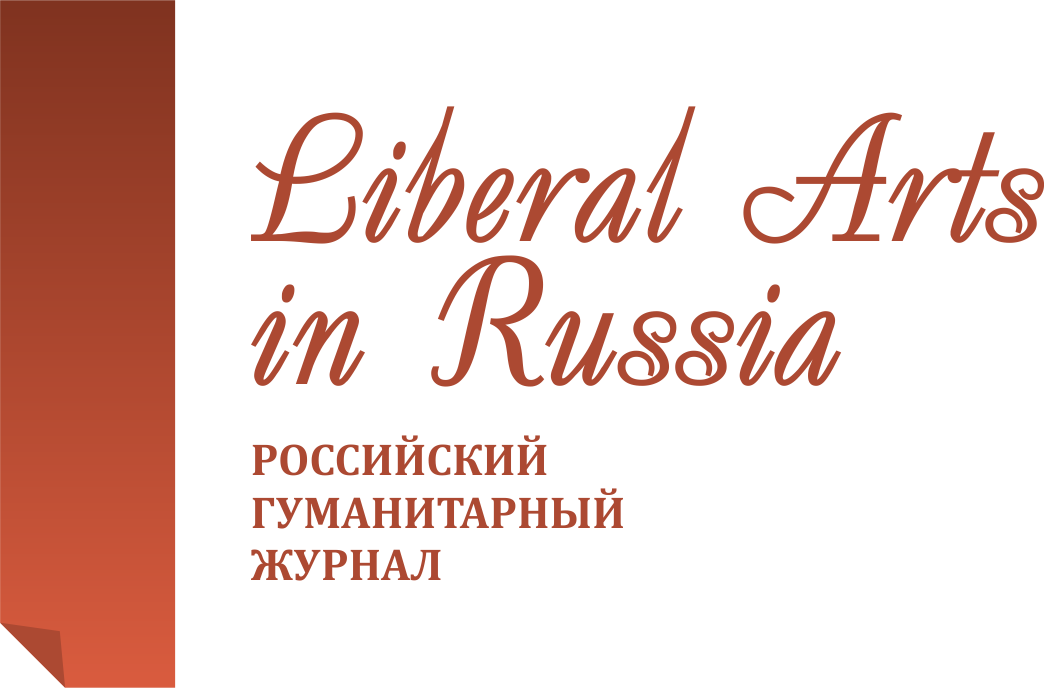The peculiarities of modern advertising medical discourse of the OTC drugs
Liberal Arts in Russia. 2019. Vol. 8. No. 5. Pp. 361-370.
Get the full text (Russian) Email: el.sapiente@bk.ruAbstract
The article discusses the concept of modern advertising medical discourse of OTC drugs and identifies its features. On the basis of German language material, it was established that the leading features of the modern printed medical discourse of OTC drugs, that is complex sociocultural phenomenon and performs a number of communicative and pragmatic functions in society, are the presence of a wide range of socially heterogeneous recipients, the active use of various extra-language tools (image, graphics, color), as well as extreme brevity and laconicism when using linguistic means with colloquial coloring. Together, these tools create an advertising image. The language tools include the slogan, information about the advertised product, its capabilities in terms of improving and stabilizing the health of potential buyers. Non-linguistic means include the image of a trademark, graphic and iconic means, color design. Each component of the advertising text carries certain information, is interconnected with others, helps to add expressiveness to the advertising. A harmonious combination of colors serves this purpose too. In the text of the advertisement of OTC drugs, advertisers try to use the same colors that are on the packaging of the advertised drugs. In the advertisement of OTC drugs, in addition to the images of the advertised drugs themselves, the images of happy people are actively used as the main background in order to convince the recipient that the drugs are irreplaceable and, thanks to the use of these drugs, the life will become more comfortable and healthier.
Keywords
- • advertising medical discourse
- • advertising of OTC drugs
- • media discourse
- • communicative and pragmatic function of advertisements
- • addressant
- • addressee
References
- Avidzba A. V. Aktual'nye problemy filologii i pedagogicheskoi lingvistiki. Vladikavkaz, 2016. No. 1. Pp. 35-40.
- Atyaksheva D. A. Liberal Arts in Russia. 2019. Vol. 8. No. 3. Pp. 221-232.
- Gurzhii D. A. Molodoi uchenyi. 2015. No. 12. Pp. 991-993. URL: https://moluch.ru/archive/92/20451/.
- Dobrosklonskaya T. G. Nauchnye vedomosti. Ser. Gumanitarnye nauki. 2014. No. 13. Pp. 181-187.
- Zheltukhina M. R. Entsiklopediya Diskursologiya. Diskurs-Pi. 2013. Vol. 10. No. 3. Pp. 292-296.
- Kashevskii P. A. Shriftovaya grafika: uchebnoe posobie [Font graphics: textbook]. Mn.: Vysheishaya shkola, 2017.
- Kozhemyakin E. A. Nauchnye vedomosti Belgorodskogo gosudarstvennogo universiteta. Seriya: Gumanitarnye nauki. 2010. No. 2(73). No. 11. Pp. 13-21.
- Kuz'mina N. A. Sovremennyi mediatekst: uchebnoe posobie [Modern media text: textbook]. Omsk, 2011.
- Mamedov A. N. Kommunikativno-pragmaticheskie aspekty tekstov pechatnoi nemetskoyazychnoi reklamy [Communicative-pragmatic aspects of texts of German-language print media advertising]. Moscow: MPGU, 2015.
- Mandel B. R. Psikhologiya reklamy: istoriya, problematika: uchebnoe posobie [Psychology of advertising: history, problems: textbookl]. Moscow: FLINTA, 2013.
- Minlibaeva E. R. Vestnik Bashkirskogo universiteta. 2018. Vol. 23. No. 1. Pp. 186-191.
- Nikitenko A. A. Osnovy mediazhurnalistiki: uchebnoe posobie [Fundamentals of media journalism: textbook]. Novosibirsk: izd-vo NGTU, 2012.
- Prozorov V. V. Russkaya slovesnost' v kontekste sovremennykh integratsionnykh protsessov. Volgograd, 2005. Pp. 30-31.
- Simbirtseva N. A. Vestnik slavyanskikh kul'tur. 2017. Vol. 46. Pp. 70-85.
- Tayupova O. I. Mediatekst i mediadiskurs [Media text and media discourse]. Ufa: RITs BashGU, 2017.
- Tayupova O. I. Liberal Arts in Russia. 2017. Vol. 6. No. 5. Pp. 435-443.
- Tayupova O. I. Slovo, vyskazyvanie, tekst v kognitivnom, pragmaticheskom i kul'turologicheskom aspektakh: Mat-ly 9-i Mezhdunarodnoi nauchnoi konf. (g. Chelyabinsk, 18-20 aprelya). Vol. 2. Chelyabinsk: ChelGU, 2018. Pp. 98-101.
- Temnikova L. B. Politematicheskii setevoi elektronnyi nauchnyi zhurnal Kubanskogo gosudarstvennogo agrarnogo universiteta. 2016. No. 119(05). Pp. 1-13.
- Uvarova E. A. Vestnik MGOU. 2015. No. 5. Pp. 47-54.
- Beasley R., Danesi M. Persuasive Signs: The Semiotics of Advertising. Berlin: Mouton de Gruyter, 2010. Pp. 193.
- Berman M. Street-smart advertising: how to win the battle of the buzz. Lanham: Rowman & Littlefield Publishers, 2007. Pp. 237.
- Landa R. Graphic design solutions. Boston: CENGAGE; 4th edition, 2011. Pp. 448.
- Pichler W. The language of pictures in print media advertising. Hamburg: Diplomica, 2001. Pp. 94.
- Seebohn J. Gabler KompaktlexikonWerbung. Aufl. 2. Wiesbaden: Gabler, 2011. Pp. 285.
- Stöckl H. Sprachitil - Zugänge und Anwendungen. Festschrift zum 60. Geburtstag v. Ulla Fix. Hrsg. v. Barz I. Frankfurt a.M.: Lang, 2003. Pp. 165-179.
- Stöckl H. Angewandte Linguistik. Hrsg. v. Knapp K., Antos G., Becker-Mrotzek M. u.a. Tübingen u. Basel: A. Francke, 2004. Pp. 229-254.
- Ungerer F. English Media Texts, Past and Present: Language and Textual Structure. Amsterdam: John Benjamins. Pp. 304.
